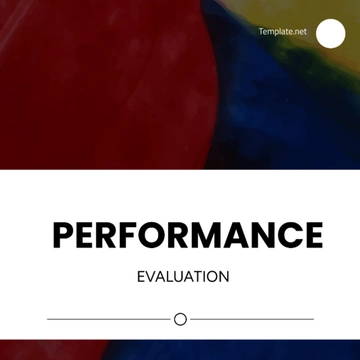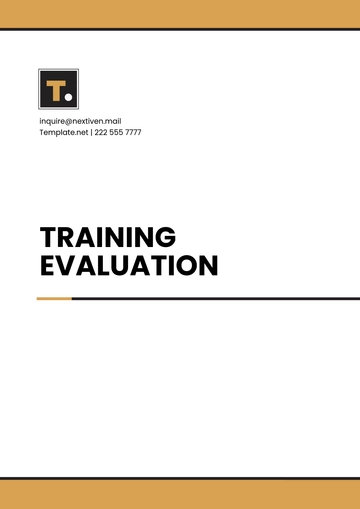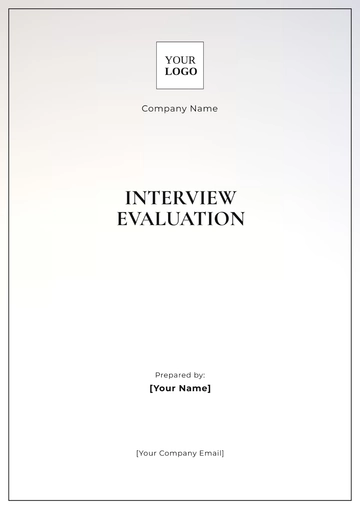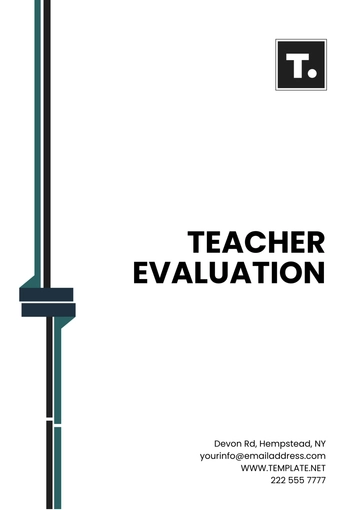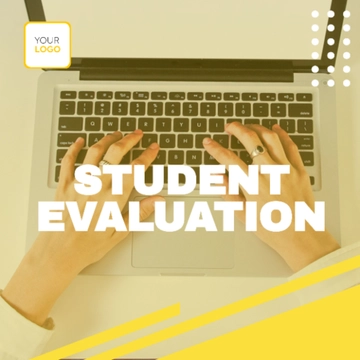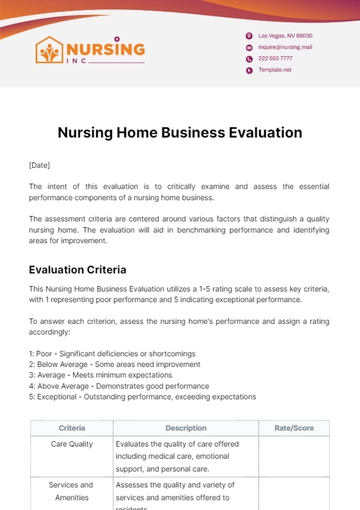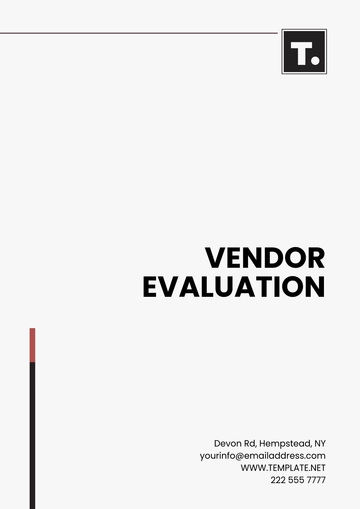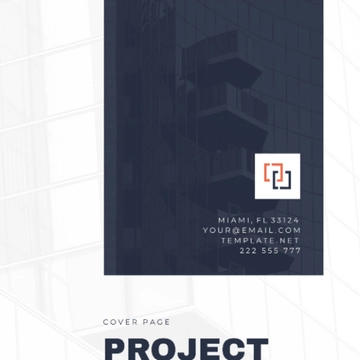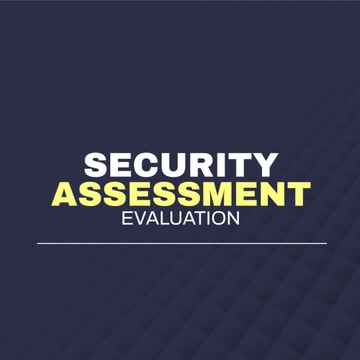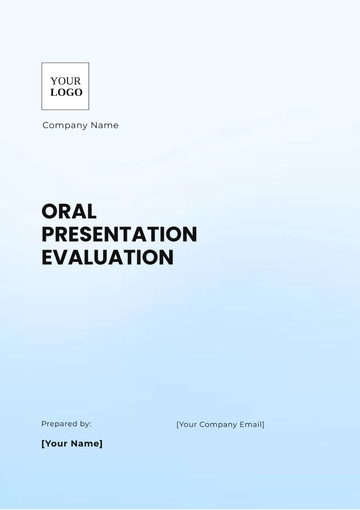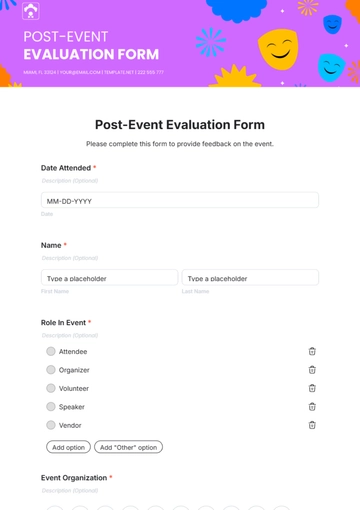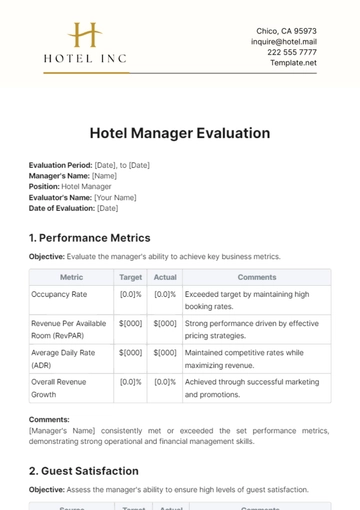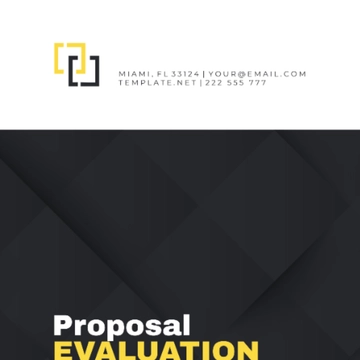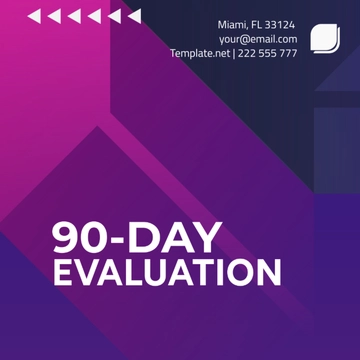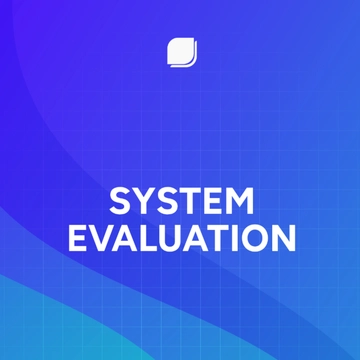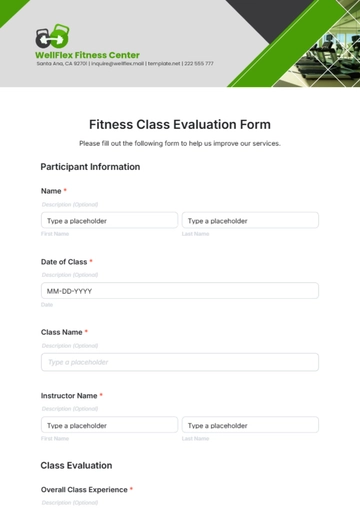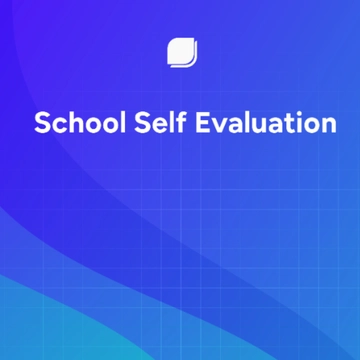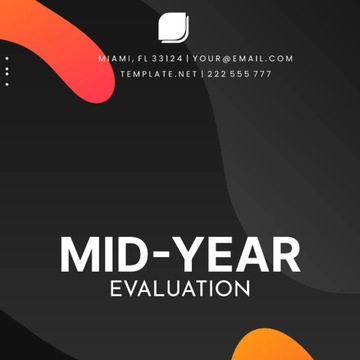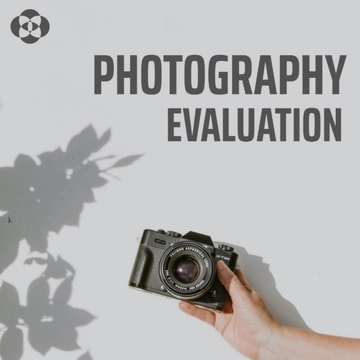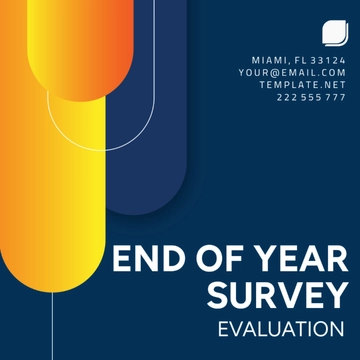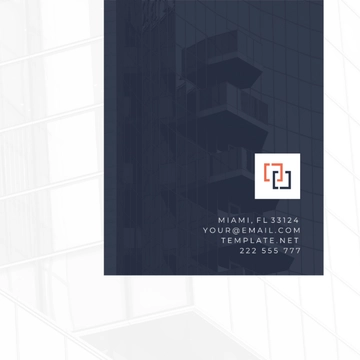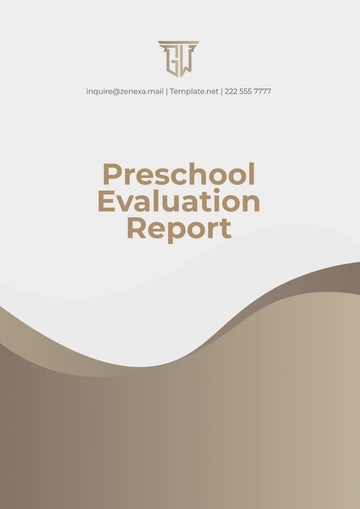Free Administration Meeting Performance Evaluation Report
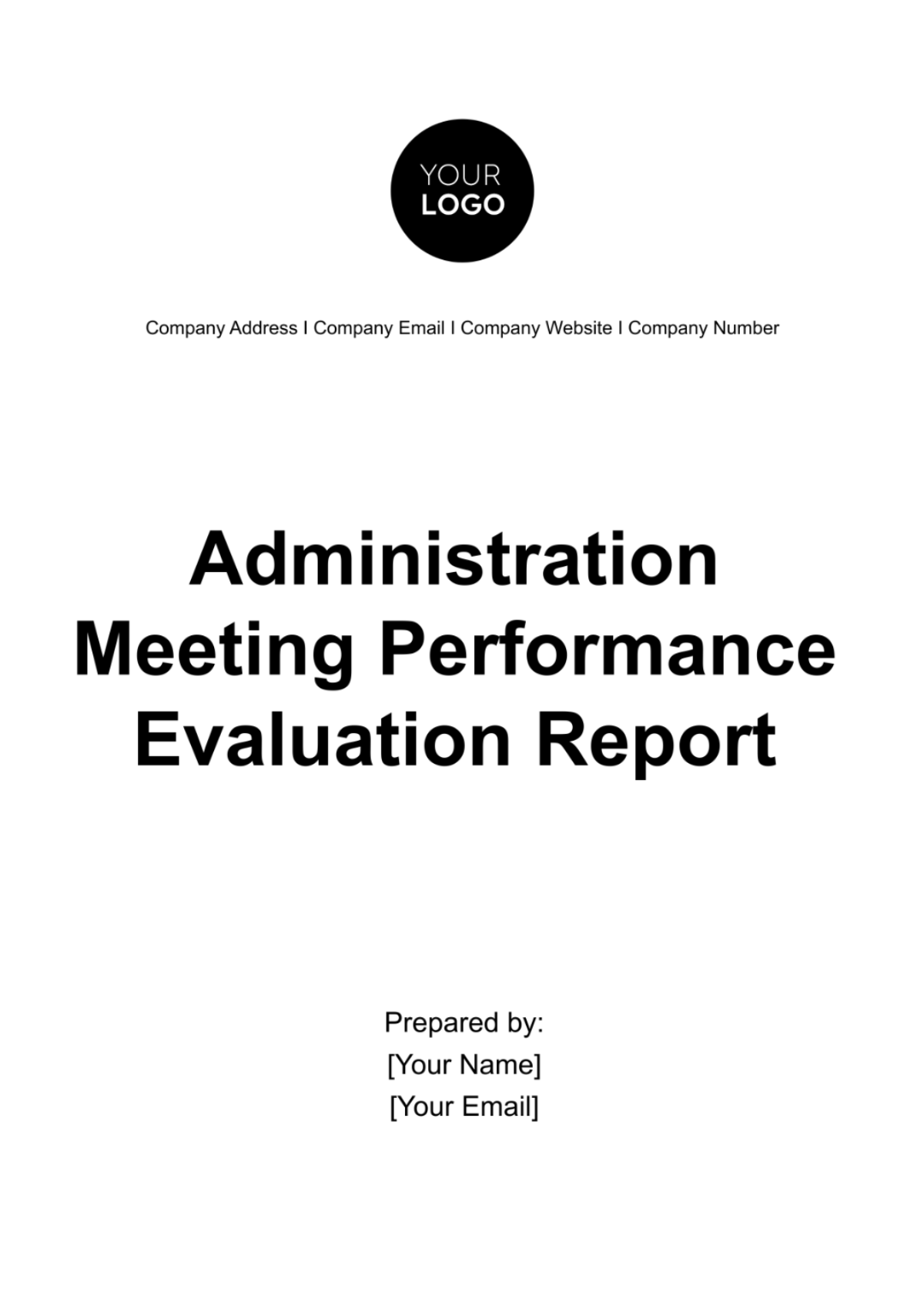
I. Objective
The primary objective of this comprehensive report is to meticulously evaluate the efficiency and effectiveness of the administration meetings held by [Your Company Name], with the ultimate goal of identifying both the prevailing strengths and potential areas for improvement. This thorough evaluation is crucial for enhancing the overall productivity and outcomes of these essential gatherings. By leveraging a detailed analysis coupled with strategic recommendations for improvement, this document is designed to serve as an invaluable guide for significantly elevating the quality and effectiveness of our administrative meetings. Through this report, [Your Company Name] aims to foster a culture of continuous improvement and efficiency, ensuring that every meeting is an opportunity to advance our organizational goals and objectives, thereby maximizing the value of our collective time and efforts.
II. Report Overview
This Administration Meeting Performance Evaluation Report represents a comprehensive aggregation and meticulous analysis of data collected over a designated timeframe, focusing intently on the management and operational facets of administrative meetings at [Your Company Name]. By delving into critical aspects such as participant attendance, meeting duration, and the intrinsic value of content discussed, this document reveals a nuanced understanding of both the overt and covert strengths and shortcomings as they pertain to our organizational key performance indicators (KPIs).
The insights derived from this evaluation are not merely observational but serve as a cornerstone for formulating actionable recommendations designed to enhance the efficiency and output of our meetings. This report is pivotal in our continuous pursuit of excellence, ensuring that every administrative meeting is not just a procedural formality but a strategic asset driving [Your Company Name] towards its overarching goals and milestones with greater precision and effectiveness.
III. Meeting Performance Evaluation
In this section, we delve into the critical components that constitute the core of [Your Company Name]'s administrative meetings: Attendance, Meeting Duration, and Value and Content. By scrutinizing these elements, we aim to uncover the intricacies of meeting dynamics, identifying areas of strength as well as those necessitating improvement. This analysis is instrumental in driving strategic enhancements, ensuring that our meetings not only achieve but exceed their intended objectives through optimized participation, time management, and content delivery.
1. Attendance
A cornerstone for any successful meeting, attendance is a direct indicator of engagement and commitment among team members. Our detailed review presents a graphical analysis of attendance patterns over recent meetings, reflecting a generally high level of participation. This consistent attendance underlines the importance of these meetings but also points to the need for strategies to maintain or improve these rates, emphasizing the significance of every member's presence in shaping decisions and outcomes.
Meeting Date | Invited Attendees | Present |
|---|---|---|
January 10 | 20 | 18 |
February 14 | 20 | 16 |
March 9 | 20 | 17 |
April 6 | 20 | 19 |
May 18 | 20 | 18 |
2. Meeting Duration
The detailed investigation into meeting durations has shed light on a tendency for meetings to extend beyond their scheduled time frames, often due to discussions veering off-topic or excessive deliberation on matters not central to the meeting's objectives. This section presents a comprehensive breakdown of meeting durations, highlighting the need for enhanced time management and the adoption of more focused meeting protocols.
Meeting Duration Insights
Meeting Date | Scheduled Duration (hours) | Actual Duration (hours) | Overrun (%) | Primary Causes of Extension |
|---|---|---|---|---|
January 10 | 2 | 2.5 | 25 | Off-topic discussions |
February 14 | 1.5 | 2 | 33 | Extended decision-making |
March 9 | 2 | 2.3 | 15 | Non-critical deliberations |
April 6 | 1.5 | 1.8 | 20 | Unplanned agenda items |
May 18 | 2 | 2.4 | 20 | Off-topic discussions |
The data reveals a clear pattern of meetings not adhering to their planned durations, with the average overrun across all meetings being approximately 22.6%. This indicates a significant area for improvement in enforcing time discipline and ensuring meetings are as productive and time-efficient as possible.
3. Value and Content of Meetings
Upon evaluating the value and content of meetings, it's evident that while the meetings excel in areas of information sharing and collaborative decision-making, the precise setting of meeting goals and objectives shows room for improvement. This evaluation emphasizes the importance of every meeting having a clear, actionable purpose, directly impacting the organization's decision-making efficacy and administrative success.
Content Quality and Effectiveness
Meeting Date | Goals Clarity (Scale 1-5) | Information Sharing (Scale 1-5) | Decision-Making Efficiency (Scale 1-5) |
|---|---|---|---|
January 10 | 3 | 4 | 4 |
February 14 | 2 | 4 | 3 |
March 9 | 3 | 5 | 4 |
April 6 | 3 | 4 | 4 |
May 18 | 4 | 5 | 5 |
This table quantifies the perceived quality and effectiveness of meeting content across several dimensions. While the scores for information sharing and decision-making efficiency are generally high, indicating effective communication and collaborative problem-solving, the clarity of goals presents a consistent area for enhancement.
4. Suggestions for Improvement
In response to the insights garnered from our comprehensive evaluation of administrative meetings at [Your Company Name], we recommend a series of strategic enhancements aimed at bolstering the efficiency, effectiveness, and overall value of these crucial gatherings. These suggestions are designed not only to address the specific areas identified for improvement but also to foster a culture of continuous enhancement in our meeting practices.
Preparation of a Structured Agenda: The foundation of a productive meeting lies in its agenda. A well-prepared, structured agenda serves as a roadmap, guiding discussions to remain focused on critical topics and objectives. This approach ensures that every meeting segment contributes directly to the meeting's goals, minimizing deviations into non-essential discussions. By distributing the agenda in advance, participants can prepare adequately, fostering more engaged and meaningful contributions.
Cultivation of an Open and Collaborative Environment: A thriving meeting environment is one that encourages openness and collaboration among its participants. By fostering a culture where every voice is valued and heard, we enable more effective decision-making processes. This involves not only promoting active participation from all attendees but also ensuring that the meeting space—whether physical or digital—is conducive to open dialogue. Techniques such as round-table discussions and brainstorming sessions can be instrumental in achieving this.
Time Management: Effective time management is crucial to the success of any meeting. Setting strict time limits for each agenda item helps in keeping the meeting within its allocated timeframe, ensuring that discussions are both productive and time-efficient. Utilizing tools like timers or time-keeping roles can aid in this process, providing gentle reminders to move discussions forward and adhere to the scheduled end time.
Inclusive Stakeholder Engagement: Ensuring the involvement of all necessary stakeholders is key to fostering comprehensive discussions and well-rounded decision-making. This inclusivity means going beyond the usual participants to invite individuals whose input can offer valuable perspectives on the topics at hand. By doing so, we guarantee that decisions are informed by a diverse range of insights, enhancing the quality and applicability of the outcomes.
Follow-up Communications: Effective communication does not end when the meeting does. Distributing follow-up emails post-meeting to summarize key decisions and action points is vital for ensuring alignment and accountability among all participants. These communications should highlight the agreed-upon actions, responsible parties, and timelines, serving as a written record that can be referenced to track progress and follow through on commitments.
Implementing these recommendations will significantly improve the structure, conduct, and outcomes of administrative meetings at [Your Company Name]. By committing to these strategies, we not only enhance the immediate productivity of our meetings but also contribute to the long-term success and efficiency of our organizational operations.
IV. Meeting Efficiency Metrics
To gain a deeper understanding of our administrative meeting performance, we have analyzed several key efficiency metrics. These metrics provide tangible data points that help us quantify the effectiveness of our meetings and identify areas where targeted improvements can significantly impact.
A. Attendance vs. Engagement Rate
One critical aspect of meeting effectiveness is the correlation between attendance rates and engagement levels during the meetings. The table below presents a comparative analysis of the attendance rates against the perceived engagement levels, offering insights into how well we are maintaining participant interest and involvement.
Meeting Date | Invited Attendees | Present | Engagement Level (%) |
|---|---|---|---|
January 10 | 20 | 18 | 85 |
February 14 | 20 | 16 | 80 |
March 9 | 20 | 17 | 88 |
April 6 | 20 | 19 | 92 |
May 18 | 20 | 18 | 90 |
Engagement Level is estimated based on active participation, contributions to discussions, and post-meeting feedback.
B. Meeting Objectives Achievement Rate
Another vital metric is the achievement rate of predefined meeting objectives, which measures how effectively a meeting meets its set goals. This metric helps in understanding the direct impact of meetings on organizational progress and decision-making efficiency.
Meeting Date | Objectives Set | Objectives Achieved | Achievement Rate (%) |
|---|---|---|---|
January 10 | 5 | 4 | 80 |
February 14 | 4 | 3 | 75 |
March 9 | 5 | 5 | 100 |
April 6 | 6 | 5 | 83 |
May 18 | 5 | 4 | 80 |
V. Action Plan for Meeting Optimization
Based on the comprehensive evaluation and insights drawn from the efficiency metrics, we propose an action plan to optimize our administrative meetings further. This plan outlines specific steps to be implemented over the next quarter to address identified gaps and enhance meeting effectiveness.
A. Targeted Improvements and KPIs
Improvement Area | Action Steps | Target KPIs |
|---|---|---|
Agenda Structuring | - Develop agenda templates. - Pre-meeting distribution. | - 100% agenda adherence. - 90% participant preparation rate. |
Enhancing Engagement | - Introduce interactive segments. - Use of engagement tools. | - Increase engagement level to 95%. |
Time Management | - Assign timekeeper roles. - Implement strict time limits. | - 95% of meetings to end on time. - Reduction in meeting duration by 10%. |
Stakeholder Inclusivity | - Wider stakeholder analysis. - Targeted invites based on agenda. | - 100% necessary stakeholder attendance. - 20% increase in diverse insights. |
Follow-up Effectiveness | - Standardize follow-up templates. - Implement a tracking system for action items. | - 100% follow-up rate. - 80% completion rate for action items within |
Implementing this action plan requires concerted efforts from all team members and stakeholders involved. By setting clear targets and regularly reviewing our progress against these KPIs, [Your Company Name] will ensure that our administrative meetings are not just gatherings, but pivotal moments of collaboration that drive our organization forward.
VI. Conclusion
The in-depth analysis and subsequent Performance Evaluation of our administration meetings have underscored a critical pathway for [Your Company Name] to not only refine but also significantly elevate the efficiency, effectiveness, and overall impact of these essential gatherings. Through a detailed examination of attendance patterns, meeting durations, and the quality and content of discussions, this report has illuminated both the strengths and areas requiring attention within our current meeting management framework.
A. Key Insights and Path Forward
The insights derived from this evaluation serve as a potent tool for strategic improvement. They underscore the necessity for [Your Company Name] to implement a series of targeted, evidence-based enhancements aimed at optimizing our administrative meeting protocols. These adjustments, ranging from the development of a structured agenda to the cultivation of an open and collaborative environment, are poised to streamline meeting processes, encourage more meaningful participation, and ensure that each meeting’s content is both relevant and purpose-driven.
B. Anticipated Outcomes
By embracing the recommendations outlined within this report, we are poised to witness a transformation in the way administrative meetings are conducted at [Your Company Name]. The implementation of these strategies is expected to yield a significant uptick in meeting productivity, marked by a more disciplined approach to time management, an increase in actionable outcomes from each gathering, and a stronger alignment with our overarching organizational goals. This evolution in meeting culture is anticipated to not only enhance the immediate outcomes of the meetings themselves but also to contribute to the broader success and achievement of [Your Company Name]’s strategic objectives.
C. Commitment to Continuous Improvement
This Performance Evaluation Report does not represent an endpoint but rather a milestone in our ongoing quest for excellence. [Your Company Name] remains committed to continuously monitoring, assessing, and refining our meeting practices. This dedication to improvement reflects our broader organizational ethos of embracing change, fostering innovation, and pursuing excellence in all facets of our operations. As we move forward, the strategies and insights provided here will serve as a cornerstone for enhancing the quality, efficiency, and impact of our administrative meetings, thereby propelling [Your Company Name] towards achieving its vision and goals in an increasingly dynamic and competitive landscape.
- 100% Customizable, free editor
- Access 1 Million+ Templates, photo’s & graphics
- Download or share as a template
- Click and replace photos, graphics, text, backgrounds
- Resize, crop, AI write & more
- Access advanced editor
Template.net brings you an essential editable Administration Meeting Performance Evaluation Report Template. This customizable document is editable in our AI Editor Tool for hassle-free alterations. Enhance your business performances with precision and high-standard evaluation reports. This template is a huge time-saver to allow you to focus on pressing administrative tasks. Be step ahead, let us empower your business with our professionally designed template.

